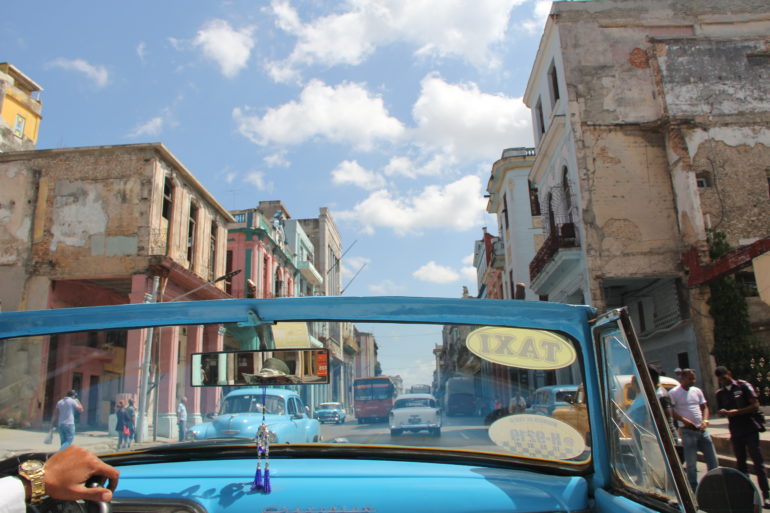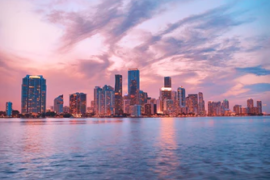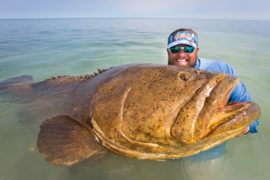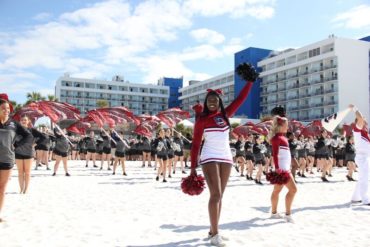By Joana Cleckner
There is so much speculation on whether it is legal for Americans to travel to Cuba from the States. Read any Facebook travel thread on the issue and you will see a hundred different comments with an equal amount of opinions on the matter. This is not surprising considering in 2014, Obama loosened restrictions on travel allowing Americans to travel to Cuba for one of twelve designated reasons. Then in 2017, Trump altered those regulations affecting details such as how solo travelers can travel to Cuba, which designations require visas, etc. Adding to the confusion, at the end of 2016 and in between these policy changes, Southwest Airlines started offering non-stop direct flights from Tampa to Havana for the first time in over 50 years, not to mention the multiple flight options available every day on American and Delta Airlines direct to Havana from Miami. All of this leaves most Americans, let alone us FLocals, left to wonder, how can I get there? Should I go? Am I even allowed to? So I decided to stop dreaming about those classic cars and gorgeous colors I see flooding Instagram and just make it happen. I wanted to weed through the inaccuracies and experience it on behalf of my fellow travel-loving Floridians (it’s a tough life, but someone had to do it).
So how hard is it really?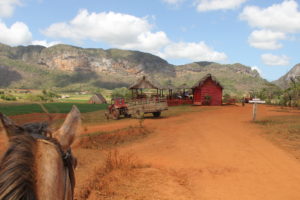
What does the current law really say about Americans traveling to Cuba? Or, in other words…will I be arrested if I try this? According to the guidelines, traveling to Cuba from the U.S. as an American citizen for the sole purpose of tourism has been and remains illegal. However, there is now a legal option to travel without an advance visa or organized group, called the “Support for the Cuban People” category. It allows for individuals and non-governmental organizations to promote independent activity in order to strengthen civil society within Cuba. Now I won’t get into the politics of it all, but to clarify, what this means is that as long as you are traveling to support the people of Cuba (and not the Cuban government), and as long as you can prove that you had meaningful interactions with the Cuban people (and not just lying on the beach sipping mojitos), you can now legally travel as an American, from the U.S., to Cuba. So effectively, what we are talking about is a loophole.
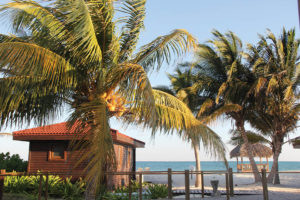
When you arrive at the airport for your flight to Cuba, and after checking in at the desk and then successfully getting through security, you will need to check-in a second time at the gate. When asked, let the gate agent know that you do not have a visa and will need to purchase one there as you are flying in “Support for the Cuban people”. The visa costs $50 and can be paid with either a credit card or U.S. dollars.
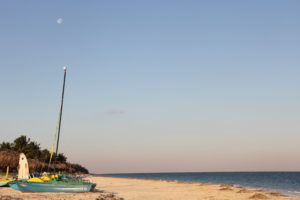 When you arrive in Cuba, yes, you will actually need to show your support for the Cuban people. But this should be easy, and by far the most memorable part! Upon your return to the States, be sure to select the “Support for the Cuban People” category (out of the twelve that are designated) when filling out your immigration form. When coming back through immigration, I was not questioned above your few basic questions relative to where I visited and if I had any purchases to declare. However, as a precaution, it would probably not be a bad idea to be prepared to explain the different ways you were able to support the Cuban people, just in case you are asked. You will also need to be sure to save hard copies of your itinerary, your receipts, and some evidence that you
When you arrive in Cuba, yes, you will actually need to show your support for the Cuban people. But this should be easy, and by far the most memorable part! Upon your return to the States, be sure to select the “Support for the Cuban People” category (out of the twelve that are designated) when filling out your immigration form. When coming back through immigration, I was not questioned above your few basic questions relative to where I visited and if I had any purchases to declare. However, as a precaution, it would probably not be a bad idea to be prepared to explain the different ways you were able to support the Cuban people, just in case you are asked. You will also need to be sure to save hard copies of your itinerary, your receipts, and some evidence that you 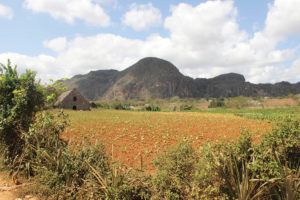 actually stayed, ate, and did what you are claiming as these records need to be saved for a minimum of five years.
actually stayed, ate, and did what you are claiming as these records need to be saved for a minimum of five years.
You can always go the route of hiring a travel agent, going through the proper channels of obtaining an official travel visa in advance, and exploring Cuba with a group of other travelers on a specific and pre-planned itinerary, as per the visa requirements. If you are interested in that type of travel, I did meet an agent on the plane ride home who was an incredibly fascinating man and seemed to be very knowledgeable and capable of handling those details. His information is below. However, if you are like me, this would take all of the fun and the entire purpose out the adventure.
Just book it!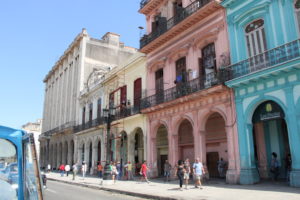
With tools such as google.com/flights and skyscanner.com, it is so easy to do this on your own. Purchase your flights in advance for cheaper fares. When I started looking into flights for my Cuba trip two weeks before I had planned to depart, the fares were exactly $200 (including taxes and fees). Since I find it far more exciting to wait until the last minute, by the time I booked my flight, the fare had gone up to $360. While that is still very reasonable for airfare to another nation, if you can book the reservation in advance, you can often find fares on the daily nonstop flight direct from Tampa to Havana in the low $200 range. Without knowing anything else about Cuba, this alone makes it an exceptionally enticing option for a long weekend getaway.
But where should I stay? Or more importantly, where will I eat?
Considering the law requires Americans to support the Cuban people, and not the Cuban government, this does limit our options. The Cuban government owns almost all of the major hotels and restaurants, so our options are limited to staying at the locally-owned casa particulars (the Cuban version of an AirBnB) and eating mostly at the paladares (think: restaurant version of an AirBnB, where people graciously open their homes to travelers to dine on their authentic  and homemade Cuban food). My best meals (Cuba is not known for their gourmet cuisine, I’m sorry to tell you) were enjoyed in the dining room of the home where I stayed in Vinales (a 2 1/2 hour taxi ride outside of Havana into the countryside). I paid the equivalent of $5 USD for each meal, which included about seven courses worth of food and enough to feed a whole family, after paying the equivalent of $17 USD to stay for the night in the guest room. I even had my own private bathroom and air conditioning (a rare treat in Cuba, and a huge expense for the Cubans, so be sure to turn it off when you are not using it). It was clearly not the Ritz-Carlton, but staying in the home of the warmest, most welcoming family with a work ethic and entrepreneurial ingenuity that will take you by surprise in a nation with a Communist government and a Socialist economy gives you the perspective and experience that yet another fancy hotel never could. There are ways around the system, so
and homemade Cuban food). My best meals (Cuba is not known for their gourmet cuisine, I’m sorry to tell you) were enjoyed in the dining room of the home where I stayed in Vinales (a 2 1/2 hour taxi ride outside of Havana into the countryside). I paid the equivalent of $5 USD for each meal, which included about seven courses worth of food and enough to feed a whole family, after paying the equivalent of $17 USD to stay for the night in the guest room. I even had my own private bathroom and air conditioning (a rare treat in Cuba, and a huge expense for the Cubans, so be sure to turn it off when you are not using it). It was clearly not the Ritz-Carlton, but staying in the home of the warmest, most welcoming family with a work ethic and entrepreneurial ingenuity that will take you by surprise in a nation with a Communist government and a Socialist economy gives you the perspective and experience that yet another fancy hotel never could. There are ways around the system, so 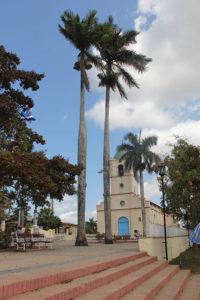 yes you can figure out a way to stay in the finer hotels if you must, such as the historic Hotel Nacional de Cuba like many world leaders and old-school mobsters alike, or The Saratoga so you, too, can be like Beyoncé and Jay-Z. However, be forewarned that these establishments (or any place in the entire country) will not be able to accept your American credit card or dollars. You would have to find a creative way to make this happen. And don’t forget what the government says about supporting the people and saving proof that you did this in case any issues arise and you are questioned about your travel there. This is not likely, but when it comes to the law, it is probably better to be safe, rather than sorry.
yes you can figure out a way to stay in the finer hotels if you must, such as the historic Hotel Nacional de Cuba like many world leaders and old-school mobsters alike, or The Saratoga so you, too, can be like Beyoncé and Jay-Z. However, be forewarned that these establishments (or any place in the entire country) will not be able to accept your American credit card or dollars. You would have to find a creative way to make this happen. And don’t forget what the government says about supporting the people and saving proof that you did this in case any issues arise and you are questioned about your travel there. This is not likely, but when it comes to the law, it is probably better to be safe, rather than sorry.
Many of the casa particulars can be booked online in advance through 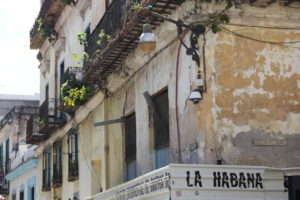 airbnb.com, which is how I booked my stay (bonus: you CAN use your American credit card for this as long as it is done ahead of time), or through the app by Cuba-Junky.com (a $5 app that works offline when no internet connection is available). There are also a host of people who will come up to you when you arrive in every major city within Cuba trying to advertise their casa particulars for rent. Not to worry, this is completely normal and safe. Many people will use this as a way to “shop around” to the different casas until they find the one they like. The people of the country do not have internet (usually only found at the rare internet cafe in some of the major city centers), so posting advertisements or photos for their home-based businesses is not as easy or common in Cuba as it would be here in America. Once you find a home to stay at, rest assured your host will either cook you a delicious meal, or gladly point you in the direction of a local paladar where you can imbibe (and yes, many of them serve adult beverages), like the farm-to-table Restaurante El Cuajani in Vinales which was to-die-for. The selections change daily based on what is available from the farm in the back of the restaurant, but you must try their signature organic sugar cane cocktail (they were so good I can’t remember the name).
airbnb.com, which is how I booked my stay (bonus: you CAN use your American credit card for this as long as it is done ahead of time), or through the app by Cuba-Junky.com (a $5 app that works offline when no internet connection is available). There are also a host of people who will come up to you when you arrive in every major city within Cuba trying to advertise their casa particulars for rent. Not to worry, this is completely normal and safe. Many people will use this as a way to “shop around” to the different casas until they find the one they like. The people of the country do not have internet (usually only found at the rare internet cafe in some of the major city centers), so posting advertisements or photos for their home-based businesses is not as easy or common in Cuba as it would be here in America. Once you find a home to stay at, rest assured your host will either cook you a delicious meal, or gladly point you in the direction of a local paladar where you can imbibe (and yes, many of them serve adult beverages), like the farm-to-table Restaurante El Cuajani in Vinales which was to-die-for. The selections change daily based on what is available from the farm in the back of the restaurant, but you must try their signature organic sugar cane cocktail (they were so good I can’t remember the name).
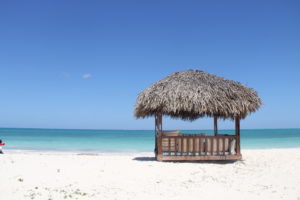 How will I pay for it?
How will I pay for it?
It’s a hard concept for most Americans to grasp as we are so accustomed to swiping away for everything from dollar menu items to sodas from the machine. However, due to the trade embargo, American credit or debit cards physically will not work there, not even in an ATM, so be sure to take out enough cash to cover the estimated cost of your entire trip before you leave the States. It is also a good idea to take a little extra to serve as a cushion since you will not be able to get any more of your money out once you are there. This seems a little daunting at first, but as long as you have a general plan in place and an extra cushion of cash, you will be fine.
[EDITOR’S NOTE: Centennial Bank, formerly Stonegate Bank of Florida, offers a Mastercard debit card which can be used in Cuba. They have offices in Arkansas, Alabama, Florida and New York, one of which you will need to personally visit and open a checking account in order to receive a debit card. The debit card can be applied for online. You must also submit an additional certification that you are authorized to travel to Cuba in “Support of the Cuban People.”]
While you are traveling throughout Cuba – for every place you stay, everything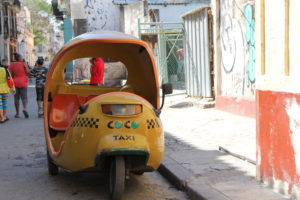 you eat, everything you do – you will have to have cash in the form of Cuban convertible pesos (CUC); not to be confused with the second currency, the Cuban peso (CUP). Yes, Cuba has two official currencies – one for the locals (CUP), and one for tourists (CUC). The CUC is equal to the dollar so it makes for an easy exchange. The CUP has significantly less value than the CUC, so make sure when exchanging your money or receiving change from a vendor that the money you are handed is the CUC. A tip for this is to look up the bills and coins online ahead of time and take a photo of them on your phone camera in case you need to reference them while you are there.
you eat, everything you do – you will have to have cash in the form of Cuban convertible pesos (CUC); not to be confused with the second currency, the Cuban peso (CUP). Yes, Cuba has two official currencies – one for the locals (CUP), and one for tourists (CUC). The CUC is equal to the dollar so it makes for an easy exchange. The CUP has significantly less value than the CUC, so make sure when exchanging your money or receiving change from a vendor that the money you are handed is the CUC. A tip for this is to look up the bills and coins online ahead of time and take a photo of them on your phone camera in case you need to reference them while you are there.
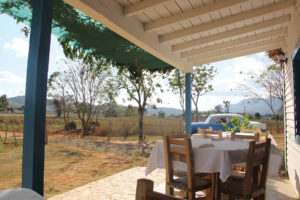 Not to fret though, as soon as you arrive in Cuba, you will be able to exchange your American dollars into pesos. Another tip is to consider exchanging your USD into euros (if the exchange rate is favorable) prior to leaving the States, and then change your newly acquired euros into pesos when arriving in Cuba to save on the additional 10% fee the Cuban government charges strictly for exchanging U.S. dollars. This fee is not charged on euros so you will only have to pay the transaction fee for the exchange (usually about 3%, but this could vary depending on where you are exchanging money – the airport, government-owned hotels, Cuban banks or cadecas, which are basically government-owned currency exchange offices). Keep in mind, you will have to have your passport with you to exchange money in any official location. Another tip is to either spend all of your money while you are there (the airport does have a couple of very small souvenir shops if you are trying to get rid of your last few pesos) OR plan to exchange any pesos you have leftover at the end of your trip back to U.S. dollars before you leave Cuba. The latter is the more expensive option as you will have to pay the exchange rate and U.S. dollar fee a second time on money that has already been hit with those fees. However, you will not be able to exchange any Cuban pesos once you are back on U.S. soil.
Not to fret though, as soon as you arrive in Cuba, you will be able to exchange your American dollars into pesos. Another tip is to consider exchanging your USD into euros (if the exchange rate is favorable) prior to leaving the States, and then change your newly acquired euros into pesos when arriving in Cuba to save on the additional 10% fee the Cuban government charges strictly for exchanging U.S. dollars. This fee is not charged on euros so you will only have to pay the transaction fee for the exchange (usually about 3%, but this could vary depending on where you are exchanging money – the airport, government-owned hotels, Cuban banks or cadecas, which are basically government-owned currency exchange offices). Keep in mind, you will have to have your passport with you to exchange money in any official location. Another tip is to either spend all of your money while you are there (the airport does have a couple of very small souvenir shops if you are trying to get rid of your last few pesos) OR plan to exchange any pesos you have leftover at the end of your trip back to U.S. dollars before you leave Cuba. The latter is the more expensive option as you will have to pay the exchange rate and U.S. dollar fee a second time on money that has already been hit with those fees. However, you will not be able to exchange any Cuban pesos once you are back on U.S. soil.
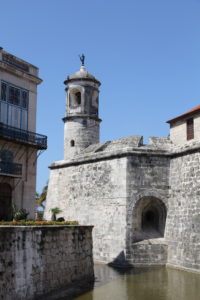 And is there anything to even do?
And is there anything to even do?
The logistics of Cuba can be a little overwhelming at first, but once you have arrived, have money in hand, and have met your hosts, it is impossible not to realize almost immediately why every major travel publication from Lonely Planet, Travel Channel, and even AirBnB, has ranked it as one of the top destinations. People love traveling to Cuba for everything that encapsulates the beauty of Cuba – the challenge of being transported to a country that is essentially frozen in time; the look on the face of your host when you hand them a suitcase filled with medicines and toiletries that are almost impossible to get in their country, yet something you take for granted on a daily basis; the feeling in your heart when your host “wraps” a used “How to Learn Spanish” book with half of a piece of paper and hands it to you with a tear in her eye (and yours) as a way to show her appreciation for the essentials you gave her family; drinking strong Cuban coffee while watching a farmer on the plantation in the countryside explain how his trade has been passed down for generations, and how the process for cultivating tobacco is still the same as he rolls his family’s cigars by hand and then gives it to you to try; admiring the colors of the buildings and the albeit crumbling architecture; watching the sunrise over the turquoise waters on the small island off the coast you are not legally supposed to be visiting; getting lost wandering 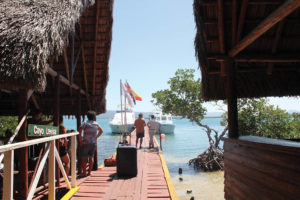 the streets of La Habana Vieja and drinking in the old haunts of Hemingway after watching more American classic cars from the 1950s than you have ever seen in the States whiz by you on the El Malecon; discussing political discord with your cab driver on the way to the airport in a nation with a history arguably more conflicted than yours; hearing the sounds of salsa and watching lovers, friends, and strangers alike dancing around every other corner and bend; and most importantly experiencing the endearing, perpetual charm of the Cuban people. This is the true beauty of Cuba. There is no other place in the world like it. With a legal way to travel there and low-cost non-stop flights from Tampa, there is no longer a reason not to experience it for yourself.
the streets of La Habana Vieja and drinking in the old haunts of Hemingway after watching more American classic cars from the 1950s than you have ever seen in the States whiz by you on the El Malecon; discussing political discord with your cab driver on the way to the airport in a nation with a history arguably more conflicted than yours; hearing the sounds of salsa and watching lovers, friends, and strangers alike dancing around every other corner and bend; and most importantly experiencing the endearing, perpetual charm of the Cuban people. This is the true beauty of Cuba. There is no other place in the world like it. With a legal way to travel there and low-cost non-stop flights from Tampa, there is no longer a reason not to experience it for yourself.
About the Author:
Joana Cleckner (also known as “Busy”) is a well-traveled FLocal, born and raised in the Tampa Bay area. She had just completed her first solo, month-long, around-the-world journey two months before taking off for another solo trip to Cuba. She is the co-founder of LIVE Watersports and can be found loving on her four year old daughter and 17 year old son every second she isn’t working, traveling, or writing. She only sleeps on planes, swears she’s going to start a blog one of these days, and takes way too many pictures that she rarely posts on Instagram.
Resources:
Joana Cleckner Instagram – @Pink.Outside.The.Box
LIVE Watersports – livewatersports.com
Cuban travel agent: The Cuba Experience
George Conlan & Greg Hembree: https://www.facebook.com/thecubaexperiencellc/
Information on Government Regulations on Travel to Cuba: https://travel.state.gov/content/travel/en/legal/Judicial-Assistance-Country-Information/Cuba.html
Information on Non-Stop Flights from Tampa, FL to Havana, Cuba: https://www.southwest.comhttps://southwest-vacations.7eer.net/c/1206417/130674/2593
Villa el Bosque, Vinales: Ernesto (booking contact) & Daya (on-site host) https://www.airbnb.com/rooms/20225198
Restaurante El Cuajini, Vinales: https://www.facebook.com/restauranteelcuajani/

